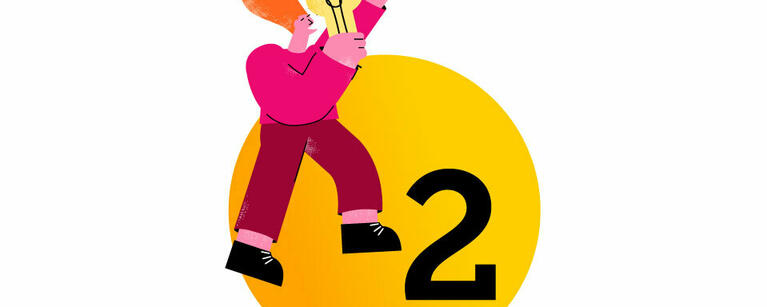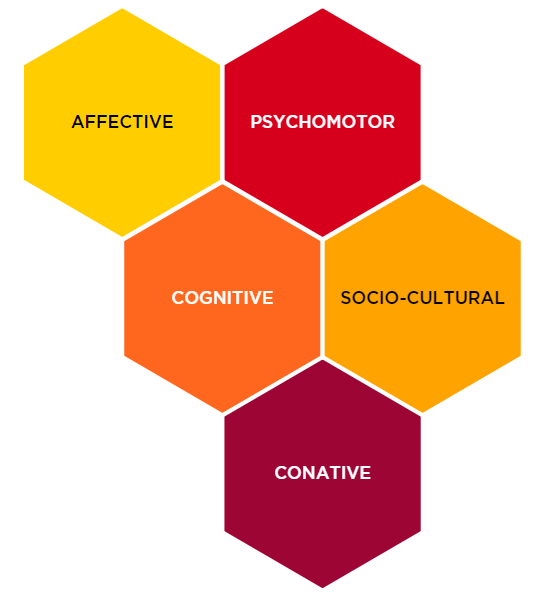Lesson 2: Designing an Experiential Learning Activity

Introduction
As was mentioned in the previous section, meaningful EL is intentional, well designed and aligned with the overall course and program objectives. It can take many forms like field trips, guest speakers, practicums, role playing, simulation, case studies, work or volunteer placements.
Regardless of type EL has some common characteristics:
There should be an emphasis on praxis. Activities and course or program theory or concepts should inform each other.
According to Freire (1985) praxis embodies an iterative and reflective method of action-taking, constituting an ongoing cycle of engagement between practice and theory. It represents the harmonious synthesis of theoretical understanding and practical application, each enriching and informing the other.
The EL activity should be relevant and meaningful to the student and provide them with the opportunity to put their knowledge into practice in a meaningful, relevant, and authentic context.
Critical reflection is a meaning-making process that helps us use what we've learned from an experience to inform future action, set goals, and consider the real-life implications of our thinking. It is a process of identifying, questioning, and assessing our deeply held assumptions about our knowledge, the way we perceive events and issues, and our beliefs, feelings, and actions.
Below, we will walk you through Kolb’s EL Cycle and show the four major components that work together to make meaningful EL experiences for students. After that, we will explore the different domains of learning associated with EL.
Taken together these sections will help you determine what type of EL is appropriate for your course or program.
It will also help you see how the four different components of Kolb’s EL cycle work together to guide the activity design and will help take your brainstorming ideas from Lesson One to concrete action plans for an activity you can use in your course or program.
How to get started with creating meaningful EL experiences
Step 1: Align your course with an experiential learning activity
Think about how an activity might help reinforce course or program objectives. Start with a description of the activity and what you want students to get from the experience.


Step 2: Ask yourself if the site/location/activity is conducive to helping your students learn what you want them to learn
A) Time constraints
- How much time will this activity take? A full semester? A couple of classes? 3-5 hours? 1 hour?
- How many classes can you dedicate to this activity?
B) Student knowledge level
- Do students have enough content knowledge to engage with this activity?
- How will this activity help them be successful in future courses? Which transferable skills will students learn with this activity?
- What will they come to know about themselves as learners and people?
Kolb’s EL Cycle
In 1984 Kolb wrote Experiential Learning: Experience as the Source of Learning and Development. Part of this resource involved a cycle to explain the iterative nature of the hands-on learning across thinking and doing. More recently, Kolb updated his model and responded to critiques of the simplicity of his original EL Cycle.
While there are different ways to think about the ongoing and cyclical nature of this experiential type of learning, Kolb’s EL cycle continues to be a valid entry point for explaining the relationships between thinking and doing as part of a process of learning.
As instructors and facilitators in higher education academic settings both curricular and co-curricular, we intentionally design experiences, prompt consolidation of learning across thinking and doing, delineate learning so students can consolidate at a point in time, and equip students to apply their learning into the future.
Kolb, D. A. (2014). Experiential learning: Experience as the source of learning and development. FT press
When we think of EL as instructors, concrete experience is the EL activity that you provide to the students. Regardless of where the it happens it is hands-on and gets the students doing something tangible. It can be a work placement, a research project in a lab, classroom or community organization, part of a course like a field trip or simulation or can take place beyond the curriculum as part of a co-curricular activity.
Here you want students to engage in reflective prompts to help them unpack their assumptions and biases related to the experience they’ve just had. This can be in the form of formal assessment or feedback or it can be more informal and conversational in class.
Here you want students want to apply theories, logic, or class concepts to the experience they just had to further understand the learning from the activity. This is a good opportunity to synthesize the experience with academic material.
This is the step that asks students to set goals for future learning opportunities. Ask students how they will apply this learning to future decisions, subsequent attemtps or how will it shape their personal, academic or professional goals moving forward. Once the student enters into a new future activity the EL cycle starts all over again with concrete experience.
Critics of Kolb’s EL Cycle note that the four phases are presented as sequential, but learners and instructors may find the phases overlap or occur simultaneously (Jeff & Smith, 1999). Further, an insufficient focus on critical reflection as an essential stage in learning misses the possibilities for learners to consolidate and articulate their take-aways (Boud et al, 1985).
Domains of learning
Another way to think about Experiential Learning is to consider more than the cognitive domain when designing your instruction and selecting activities for learning. Many instructors are already familiar with Bloom’s Domains of Learning and Taxonomy of Learning that are often used to inform learning outcomes and set activities for learning.
In addition to Bloom’s there are a couple of additional domains from the original literature that are helpful for thinking about the ways in which learning can be more experiential. These include sparking or eliciting learners’ intellect, feelings, motorskills (fine and gross), social and interpersonal abilities, cultural competencies, and their motivation, resilience, and perseverance.

The Cognitive Domain is the one many of us think of as most relevant to academic learning. It evokes knowledge of and retention of facts, theories, threshold concepts, and abstract relationships between ideas.
The Affective Domain is the aspect of learning that can spark an emotional reaction or resonance. It pertains to learners’ feelings of curiosity, excitement, surprise, offence, sense of belonging, confidence, or open-mindedness — among other possible responses.
The Psychomotor Domain refers to moving or doing something physically in real time and space. This may be the second area of academic learning most of us associate with skill or technical development. It includes abilities like preparing a microscope slide, opening a book or handling codes, typing or writing notes with a pen or stylo, using surveying equipment, manoeuvring a computer mouse to build graphic table or computer model.
The Socio-Cultural Domain refers to the way that learners act or behave in accordance (or not) with social expectations or cultural values associated with the learning. It refers to the ways in which learners go about attending class, attending to academic protocols for referencing ideas, discussing concepts and plans with peers, contributing to group work, or submitting assignments.
The Conative Domain is far lesser known, but it refers to the way that learners are (or are not) motivated and inspired to take action on, carry through, complete and demonstrate their learning. It refers to ideas that learning science and psychology have more recently labeled as drivers of learning including: motivation, engagement, resilience, self-efficacy, perseverance, determination, follow-through. Atman (1987) describes this domain as personal agency and energy in learning such that it can be directed and made visible or measurable.
Reflect On This
What surprised you the most about planning an EL Activity? Did anything feel familiar? What might be some of the challenges you experience as you adopt an EL activity in your course or program?
Note: If you want to email your reflection to yourself, you may enter your email and hit "Save." Otherwise, you can use this space to write down your thoughts without saving or use the PDF workbook to record your notes.
Collection of personal information
Your personal information is collected under
the authority of section 33(c) of the Freedom of Information and Protection of Privacy Act. If
you have any questions about the collection or use of this information, please visit our
Access to Information page.

Your Turn
Let’s take those brainstorming concepts and turn them into a concrete activity for your course or program.
What if I have an activity in mind but don’t know what to do with it?
Sometimes you might have a perfect EL activity that you want to embed in a course or program like a perfect case study or a field trip to a local site. Instinctively, you know this activity will help students learn but you haven’t really figured out yet how to align the activity to course and program outcomes.
Here is a table designed by Dr. Lisa Stowe (2020) to help with the ‘backward design’ of experiential learning connecting an activity to learning and assessment of learning. If you have an experiential, or hands-on activity in mind, these tables can help you to thoughtfully build the activity into the curriculum.


